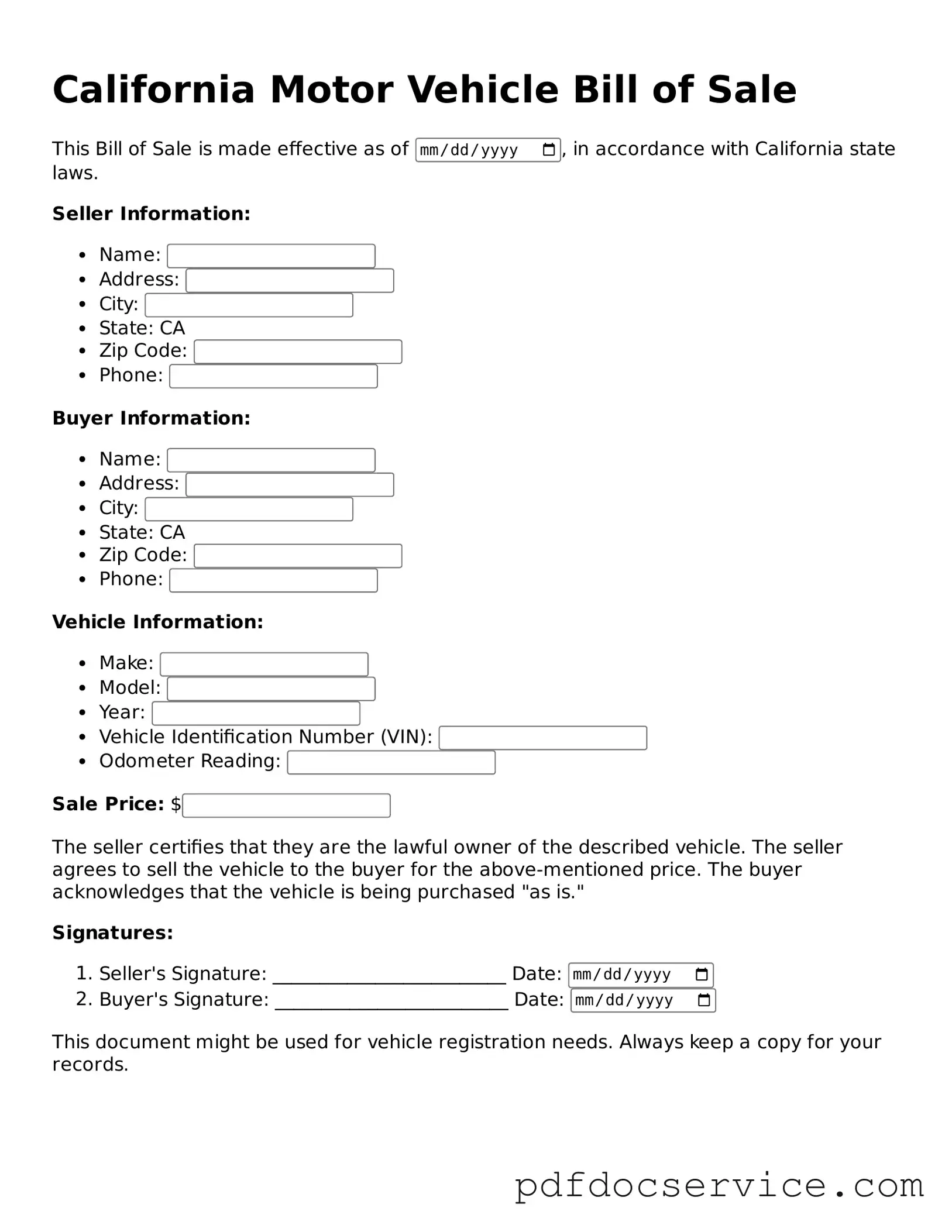What is a California Motor Vehicle Bill of Sale?
A California Motor Vehicle Bill of Sale is a legal document that serves as a receipt for the sale of a vehicle. It includes essential details such as the vehicle's make, model, year, Vehicle Identification Number (VIN), and the sale price. This document protects both the buyer and seller by providing proof of the transaction.
Is a Bill of Sale required in California?
While a Bill of Sale is not legally required in California, it is highly recommended. This document can serve as proof of ownership transfer and may be necessary for registration and titling purposes. Having a Bill of Sale can help resolve any disputes that may arise after the sale.
A comprehensive Bill of Sale should include the following information:
-
Full names and addresses of the buyer and seller
-
Details of the vehicle (make, model, year, VIN)
-
Sale price
-
Date of the transaction
-
Odometer reading at the time of sale
-
Signatures of both parties
Including all this information helps ensure clarity and legal protection for both parties involved.
Do I need to have the Bill of Sale notarized?
No, notarization is not required for a Bill of Sale in California. However, having it notarized can add an extra layer of authenticity and may be beneficial if any disputes arise later. It is always good practice to keep a copy of the notarized document for your records.
Yes, you can use a generic Bill of Sale form as long as it includes all the necessary information relevant to the vehicle sale. However, using a California-specific form may be more beneficial, as it is tailored to meet state requirements and can simplify the process of vehicle registration and title transfer.
How do I complete the Bill of Sale?
To complete the Bill of Sale:
-
Fill in the buyer and seller information.
-
Provide the vehicle details, including the VIN.
-
State the sale price and include the date of sale.
-
Record the odometer reading.
-
Both parties should sign the document.
Once completed, each party should retain a copy for their records. This documentation will be essential for future reference, especially during vehicle registration or if any disputes arise.
